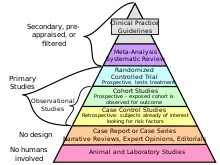The direct comparison of DNA and genes to their counterparts in computers has been done often, and with great success. Looking at life at the level of digital information is a fruitful plantation which we've probably only begun to explore. It can get evolutionists into trouble, however, and in a very specific way; it is odd to me, however, that no creationist (Intelligent Design Proponent, or IDP) seems to have hit on it.
A random error in a piece of computer code has, for all intents and purposes, precisely zero possible
positive outcomes; it is almost certain to crash the program, or cause some other irreversible error, rendering the program useless. Of course bugs do creep into software from time to time, but that just just strengthens the point: how many times do you see a bug make software
more useful or efficient? Invariably, it leads either to recalls or quick "patches" being sent out to users.
So, reflecting on the digital nature of DNA/RNA, the IDP maybe believes he's spotted a fundamental flaw in evolutionary theory, at its most basic biochemical roots. Mutations are the result in changes to the digital information in DNA (a change in a pair of bases, e.g.); an analogy to the digital nature of computers should suggest that a mutation with a positive outcome is as virtually impossible for the resulting organism as it is for a computer program. Hence, the death of Darwinian theory.
Darwinian proponents should, I think, jump to two problems with this analysis. The first problem, they might note, is that the DNA code is not created by a designer, for any specific purpose. Truly random code might very well lead to improvements. Actually, it should have equally probable positive and negative and neutral results. Even code just non-random enough to yield living things might lead to enough positives to provide a plausible rebuttal to creationist-type thinking.
Although that, I believe, is a good objection, there is a much stronger one that can be made. But to make it, we must abandon the all digital model of DNA and its products. Those products in fact are quite non-digital, read analog, meaning varying by continuous degrees instead of in discrete steps. The products are proteins.
Proteins are "macromolecules"; they have a very high molecular weight, because they are the results of many (often thousands) of small molecules called "amino acids" being chemically bonded together. The exact sequence of amino acids (there are twenty of them used in biology) is determined by three successive base units in DNA, called trinucleotides. These nucleotides are what are subject to random mutations, with the results being filtered through the sieve of natural selection.
If you're following this, you see that the exact chemical composition of a protein is determined by the sequence of trinucleotides in the DNA that wrought it. But now you have to understand how proteins work. Amino acids are very "sticky" molecules and cause all sorts of folding and modelling in the protein they comprise. That folding and modelling (and size) is key to what each protein does and how it can do it.
So: what happens when a mutation occurs? In its simplest form, a mutation simple swaps one amino acid in a protein composed hundreds to thousands of such acids for another amino acid. With what affect for the protein's function? Probably very little. With most proteins, you can probably swap out dozens of amino acids with others, and the net result is nil; the protein's size and shape aren't significantly affected. Even if it isn't nil, it's usually so small that it has almost a good a chance of being positive as negative.
Now that is prime fodder for natural selection to work on, especially when it has thousands to millions of years of differences in survival and reproduction to work on. The whole setup couldn't be better for "evolutionists" (I really mean scientists here) to understand the subjects they study.
I think that is enough said about this subject. Perhaps it's not as important as the attention I've paid to it suggests. But I do think it provides good insight into evolution and how it works at the biomolecular level.


